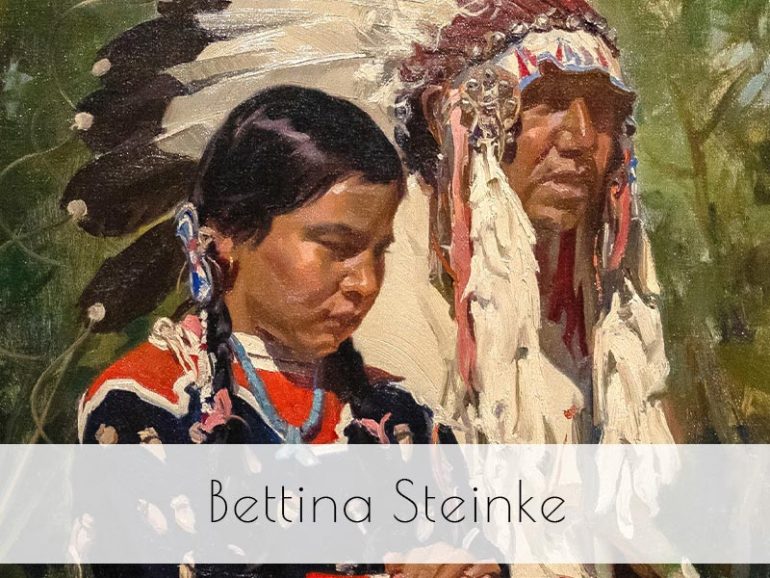Bettina Louise Steinke, born on June 25, 1913, in Biddeford, Maine, was destined to leave an indelible mark on the world of portraiture. Her father, the charismatic cartoonist and entertainer Jolly Bill Steinke, fostered her creative spirit. After graduating from Bridgeport High School, Bettina pursued her passion at the Cooper Union and the Phoenix Art School, where she honed her skills in capturing the essence of her subjects.
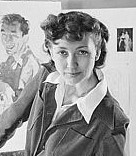
In 1937, Bettina received her first major commission: creating murals for the Children’s Studio at the National Broadcasting Company (NBC). These murals were so successful that NBC hired her as a resident artist. She skilfully portrayed stars like Fred Allen, Kate Smith, and Rudy Vallee. Her illustrations for a souvenir book of the NBC Symphony Orchestra, including a sketch of Arturo Toscanini, further showcased her talent.
During World War II, Bettina painted portraits of prominent figures such as Franklin D. Roosevelt, Douglas MacArthur, and Dwight D. Eisenhower. Her ability to capture their essence on canvas was unparalleled.
In the 1950s, Bettina and her husband, photojournalist Don Blair, embarked on a journey that took them across the globe. Settling in Taos, New Mexico, and later Santa Fe, Bettina found inspiration in the indigenous people of the American West. Here are four of her most notable works and we would love for you to study Bettina’s work for inspiration!
“Barbara Stanwyck”:
Bettina portrait of Barbara Stanwyck stands as a testament to the enduring allure and complexity of the legendary actress. Captured in a moment of contemplation, Stanwyck’s visage is rendered with meticulous detail, conveying both her iconic beauty and the depth of her character.
Bettina, known for her ability to imbue her subjects with a sense of inner life, masterfully captures Stanwyck’s essence. The actress’s penetrating gaze seems to pierce through the canvas, inviting viewers to delve into the layers of her personality. There’s a sense of intelligence and resilience in her eyes, hinting at the strength and determination that defined Stanwyck’s career.
The composition is both intimate and commanding. Stanwyck is depicted in close-up, her features illuminated by a soft, diffused light that lends a timeless quality to the scene. Every line and contour of her face is carefully delineated, conveying the passage of time and the wisdom accumulated over the years.
Yet, there’s also an air of mystery surrounding Stanwyck in this portrait. Despite the intimacy of the moment, she remains enigmatic, her thoughts hidden behind a subtle smile. It’s as if she’s inviting viewers to ponder the complexities of her persona, to unravel the secrets concealed beneath the surface.
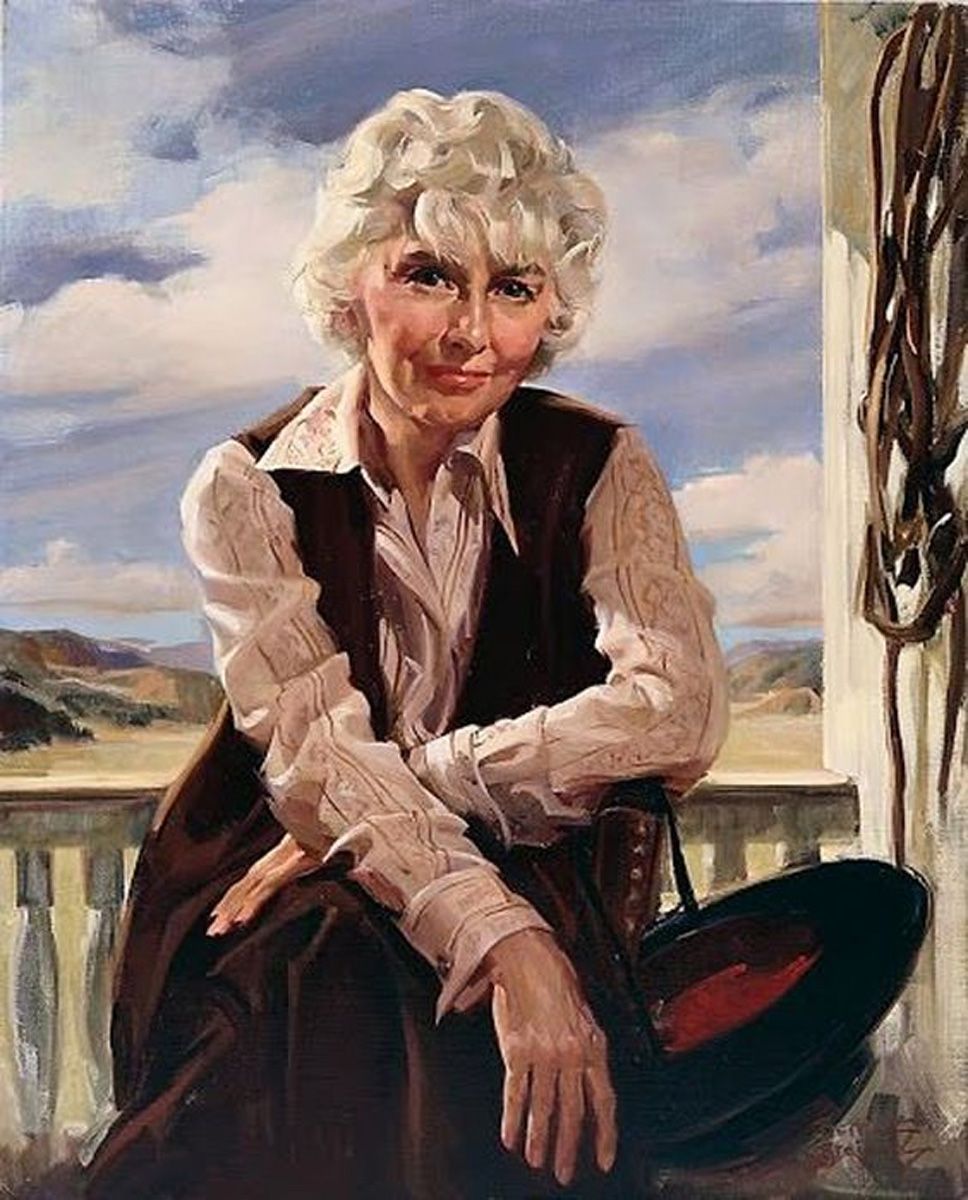
“Father and Daughter at the Crow Fair”:
This oil on canvas painting is a poignant scene capturing the bond between a father and his child. Honoured with the Prix de West award, this painting exemplifies Bettina’s mastery.
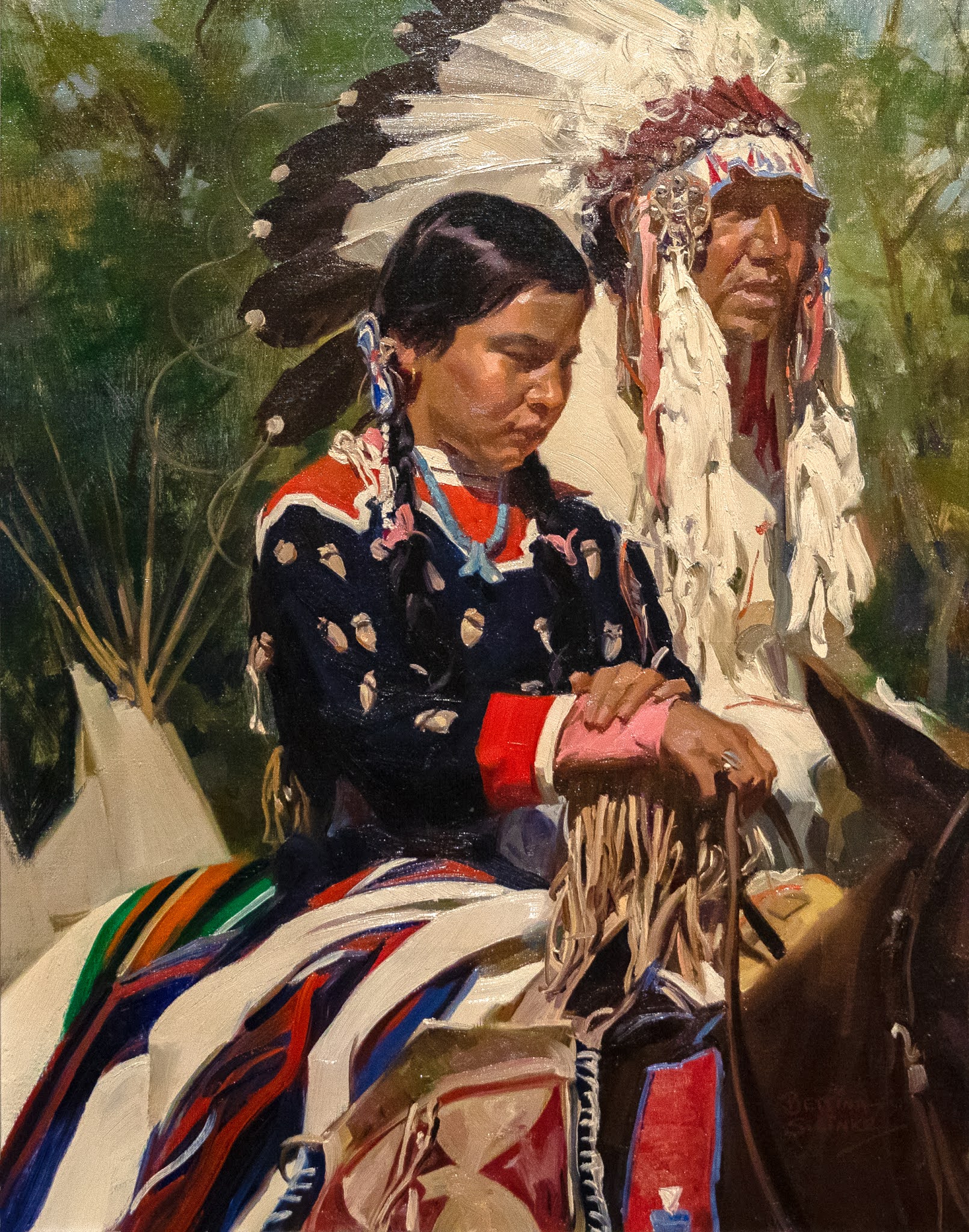
“Rainbow Dancer I”
This is a pastel painting, a vibrant portrayal of a dancer, capturing movement and colour. It is part of the permanent collection at the National Cowboy Hall of Fame and Western Heritage Centre.
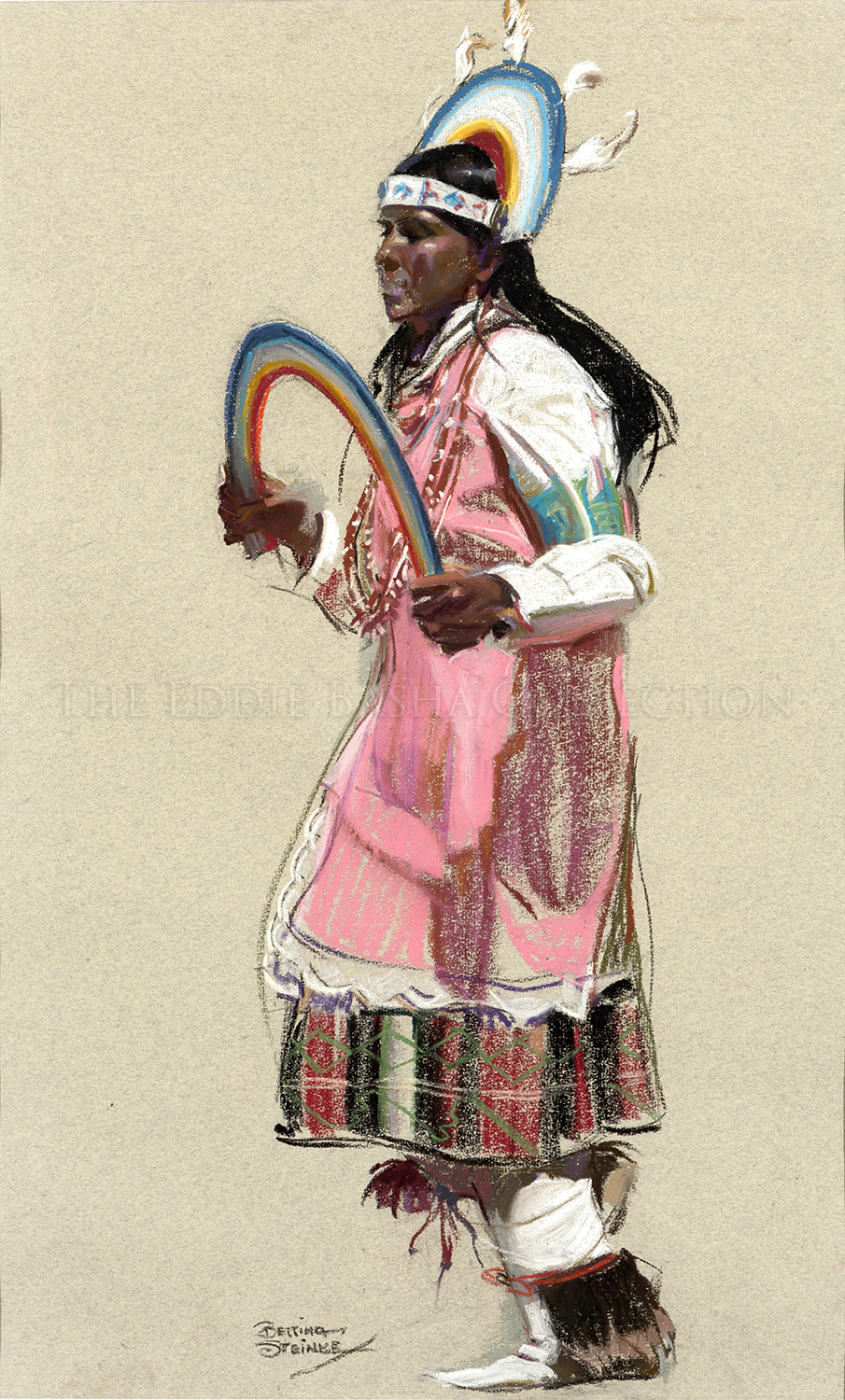
“Rainbow Dancer II”:
Another mesmerizing depiction of a dancer in pastel, celebrating grace and rhythm. Similar to the painting above it is also housed in the National Cowboy Hall of Fame and Western Heritage Centre.

In 1995, the National Cowboy Hall of Fame celebrated Bettina Steinke’s career with a retrospective exhibition. Her lifetime achievements were further acknowledged when she received the John Singer Sargent Award for Lifetime Achievement from the Society of Portrait Artists. Bettina Steinke’s legacy lives on through her captivating portraits, which continue to resonate with viewers across generations.
If you would like to receive a roundup of all of our blog posts once a week to keep you inspired in your inbox, why not sign up to our newsletter. You can access our sign up at the top of our page. If you are a London Art College student and you would like your artwork featured here, drop us a line at any time.

